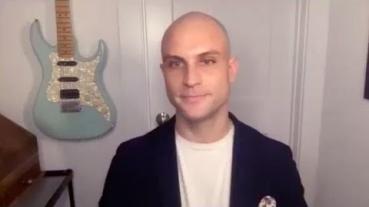What is platelet-rich plasma (PRP)?
Platelet-rich plasma, also called PRP, has long been used by physicians to help speed wound healing and treat other health issues such as arthritis and injuries to muscles, tendons and ligaments. In cosmetic use, PRP can help diminish the appearance of wrinkles and acne scars, and can improve skin’s overall tone and texture.
Studies have shown that PRP can also help treat various types of hair loss (alopecia), including male or female pattern baldness, by stimulating new hair growth. Before treating hair loss with PRP, you’ll need a thorough medical evaluation by a dermatologist to determine whether you’re a good candidate for treatment.
How platelet-rich plasma works
The first step in PRP treatment is for your physician to draw a small amount of blood from your arm. The blood is then placed into a centrifuge, which separates the red blood cells from the straw-colored liquid containing platelets and plasma.
Your doctor will use small needles to inject the processed PRP into multiple spots under the skin of the treatment area. The area might be numbed beforehand, though many patients find the discomfort minimal enough that they don’t need numbing.
The process takes about 30 minutes, and you can resume your normal activities right away. You might have soreness and bruising in the treatment area for a few days; ice packs and over-the-counter pain medication can help.
Which areas of the body (or face) are best for platelet-rich plasma?
PRP can be used anywhere on the body, but it’s most often used to rejuvenate skin on the face and neck, and is sometimes performed in conjunction with fat grafting or microneedling to maximize the results of those procedures. If it’s being used to treat hair loss, PRP is injected directly into the scalp.
How soon will you see results with platelet-rich plasma?
It can take a series of treatments and up to six months to see the results of PRP treatment for facial skin rejuvenation, though you may see improvements as quickly as a few weeks after treatment. You may need further treatments to continue or maintain the improvements.
For hair loss, multiple treatments are always required; your doctor will customize your treatment plan based on how you respond to PRP. New hair growth is usually visible within two to three months of the first treatment.
Frequently Asked Questions About Platelet-Rich Plasma (PRP)
A. The only component of the PRP injections you’ll receive is the platelet-containing plasma that’s left after your red blood cells are centrifuged away. No other substance is part of the injections.
A. PRP isn’t recommended for people who have issues with their platelets, including low platelet count or abnormal platelet function. People who have poorly controlled diabetes, take blood thinners, are pregnant or are being treated for cancer are also not good candidates for PRP.
A. Blood draws are easier if you’re hydrated, so drink plenty of water before your treatment. If you’re having facial treatment, come to your appointment with a clean face and no makeup; if you’re being treated for hair loss, come with clean hair.





